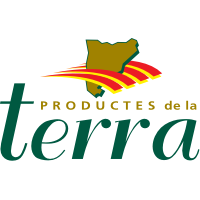PGI Calçot (sweet onion) de Valls
The fact that it is traditionally consumed at a community meal such as calçotada has made this onion a product deeply rooted in Catalan festive traditions and the main character of a social act in itself. The production of calçots is concentrated in the regions of Tarragona and its consumption in season, from November to April, has become a gastronomic act of tourist promotion in the area.
The calçots receive this name due to their cultivation method: these are white onion shoots replanted and periodically covered with soil, as the stem grows, 'panting' it. The result, once plucked, is a developed shoot of between 15 and 25 cm, white, tender and long, with a sweet and intense flavor. The calçots that are protected by the PGI are the onions from the variety of late white onion.
The calçots are prepared by cutting the beards and tails and putting them on a grill above the fire, until they turn black. They have just been baked wrapped in paper and eaten while soaking them in a romesco-like sauce.
Season calendar
- GEN
- Feb
- Sea
- Apr
- Never
- JUN
- JUL
- AUG
- THIRST
- OCT
- nov
- From
Complementary information
It is sold in bundles of 25 and 50 units tied with an identification tape provided with a numbered label, approved by the IPG Council. The label will include, in addition to the mentions required by current legislation, the name 'Calçot de Valls. Protected Geographical Indication' and the logo of the Indication. It is sold in greengrocers and greengrocers, especially in the production area, in season.
Attributes and nutritional properties
Nutritionally, a calçot is very similar to white onion, a vegetable from the group of bulbs. It has a high water content and therefore provides little energy. Onions, like garlic, have therapeutic properties, such as purifying the digestive system, destroying kidney stones, acting as an antiseptic, combating arteriosclerosis and hypertension, preventing certain types of cancer... In addition, it is a source of antioxidants thanks to the flavonoids and the sulphur compounds it contains.








